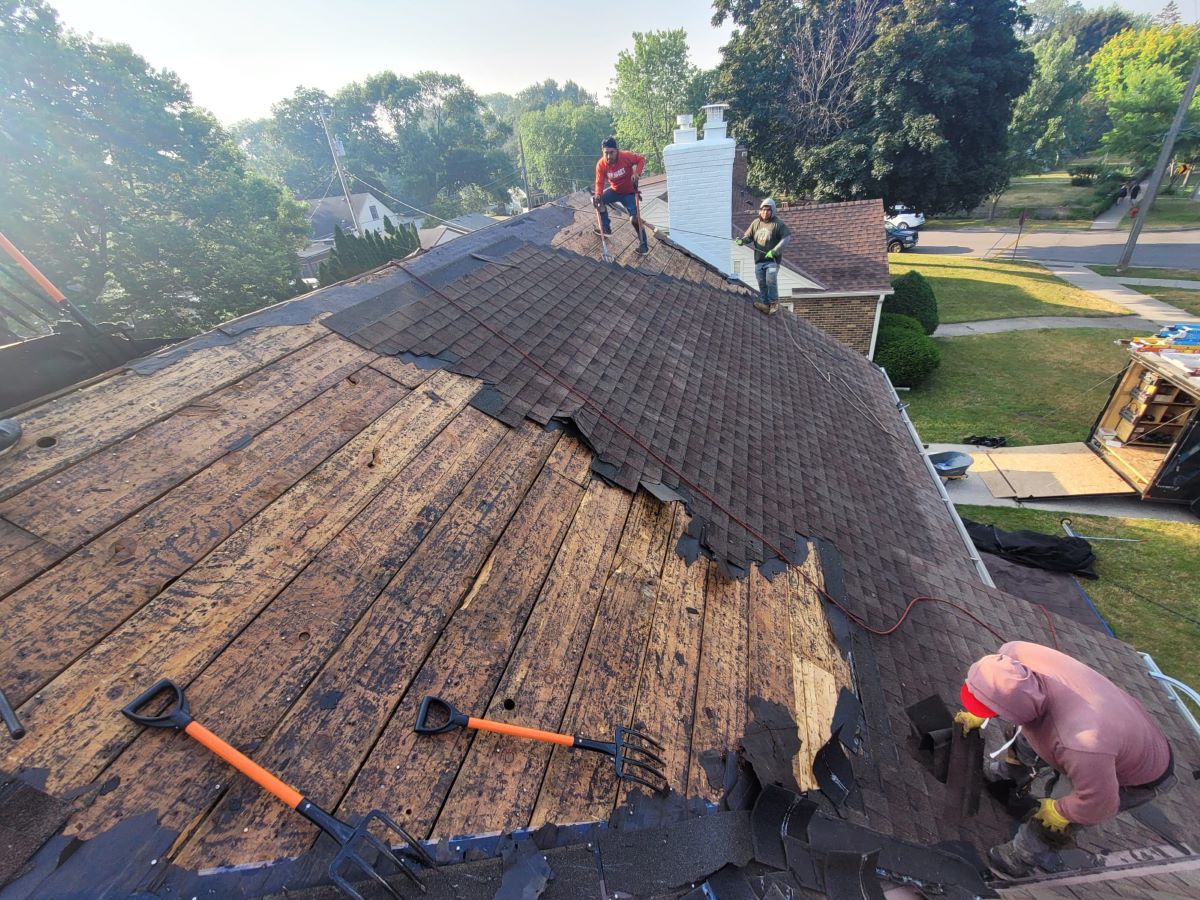

Finance
How To Fix A Repossession On Your Credit
Modified: March 6, 2024
Looking to fix a repossession on your credit? Learn effective finance strategies to repair your credit and reclaim your financial future.
(Many of the links in this article redirect to a specific reviewed product. Your purchase of these products through affiliate links helps to generate commission for LiveWell, at no extra cost. Learn more)
Table of Contents
- Introduction
- Understanding Repossessions
- Assessing the Impact of Repossessions on Your Credit
- Steps to Fix a Repossession on Your Credit
- Review Your Credit Report
- Verify Accuracy of Repossession Information
- Negotiate with the Lender
- Pay Off or Settle the Debt
- Request a Repossession Removal
- Build Positive Credit History
- Conclusion
Introduction
Experiencing a repossession can be a challenging and disheartening situation, especially when it comes to its impact on your credit. A repossession occurs when a lender takes possession of an asset, such as a car or a home, due to the borrower’s failure to make timely payments. This can have a significant negative impact on your credit score and make it difficult to secure new loans or lines of credit in the future.
Fortunately, there are steps you can take to fix a repossession on your credit and begin rebuilding your financial standing. By understanding the process and taking proactive measures, you can work towards repairing your credit and regaining control of your financial situation.
In this article, we will guide you through the process of fixing a repossession on your credit. We will explore the impact of repossessions on your credit score and outline the steps you can take to rectify the situation. Whether you are looking to remove the repossession from your credit report or improve your overall creditworthiness, this comprehensive guide will provide you with the knowledge and strategies you need.
Remember, overcoming a repossession on your credit will require patience, persistence, and a commitment to responsible financial practices. By taking the necessary steps, you can turn your credit situation around and set yourself up for a brighter financial future.
Understanding Repossessions
Before delving into the process of fixing a repossession on your credit, it’s important to have a clear understanding of what repossession entails. A repossession occurs when a borrower fails to make timely payments on an asset that was used as collateral for a loan. This can include vehicles, homes, or other valuable assets.
When you finance a car or purchase a home with a loan, the lender holds a security interest in the asset. This means that if you default on the loan or fail to make payments as agreed, the lender has the right to repossess the asset. The specific laws regarding repossession can vary depending on your jurisdiction, but in general, lenders must follow certain procedures to repossess an asset legally.
Once an asset has been repossessed, it is typically sold by the lender to recoup the outstanding debt. The proceeds from the sale are then used to satisfy as much of the debt as possible. However, if the sale does not cover the full amount owed, the borrower may still be responsible for the remaining balance, known as a deficiency balance.
In addition to the financial consequences of repossession, it also has a significant impact on your creditworthiness. A repossession will be reported to the credit bureaus and will remain on your credit report for several years, depending on the reporting practices of the lender and the credit bureau. This negative mark can lower your credit score and make it challenging to obtain credit cards, loans, or favorable interest rates in the future.
It’s important to note that while repossession can be a difficult experience, it is not the end of the road. There are steps you can take to address the repossession on your credit report and improve your creditworthiness over time.
Assessing the Impact of Repossessions on Your Credit
When it comes to fixing a repossession on your credit, it’s crucial to understand the extent of its impact on your creditworthiness. A repossession can have a significant negative effect on your credit score and overall credit profile.
The first thing to consider is the impact on your credit score. A repossession is considered a serious negative mark on your credit report and can cause your credit score to drop by a significant number of points. This can make it more challenging and expensive to obtain credit in the future. Lenders may view your repossession as an indication of financial instability and may be hesitant to lend to you.
In addition to the impact on your credit score, a repossession can also make it difficult to obtain certain types of credit. Most traditional lenders, such as banks and credit unions, are more likely to view a repossession as a red flag and may be hesitant to approve you for a loan or credit card. You may have to turn to alternative lenders who specialize in providing loans to individuals with damaged credit, but these options often come with higher interest rates and less favorable terms.
Beyond the initial impact, a repossession can continue to affect your credit for several years. The exact length of time can vary, but typically a repossession remains on your credit report for around seven years. During this time, potential lenders reviewing your credit report will see the repossession and may consider it when making decisions about extending credit to you.
It’s important to understand that a repossession is not a permanent stain on your credit history. While it may take time and effort, you can rebuild your credit and improve your creditworthiness even with a repossession on your record. By taking the necessary steps to address the repossession and demonstrate responsible financial behavior, you can work towards a better credit future.
Steps to Fix a Repossession on Your Credit
If you’re dealing with a repossession on your credit report, it’s important to take proactive steps to address the issue and work towards improving your creditworthiness. Here are six steps you can take to fix a repossession on your credit:
- Review Your Credit Report: Start by obtaining a copy of your credit report from each of the major credit bureaus – Experian, Equifax, and TransUnion. Carefully review the report to confirm that the repossession information is accurate and up to date.
- Verify Accuracy of Repossession Information: Double-check that the repossession information is correct, including the dates, the amount owed, and any subsequent collection efforts. If you find any errors or inaccuracies, you can dispute them with the credit bureaus and provide supporting documentation to rectify the situation.
- Negotiate with the Lender: Reach out to the lender who repossessed your asset and try to negotiate a resolution. This may involve discussing options such as reinstating the loan, creating a repayment plan, or settling the debt for less than the full amount owed. Be prepared to provide documentation of your current financial situation and explain any extenuating circumstances that may have led to the repossession.
- Pay Off or Settle the Debt: If you are able to reach an agreement with the lender, make arrangements to pay off or settle the debt as agreed. Paying off the debt in full can help show potential lenders that you are taking your financial obligations seriously, while settling for less than the full amount can still be beneficial in resolving the debt.
- Request a Repossession Removal: After paying off or settling the debt, you can request that the lender remove the repossession from your credit report. While there is no guarantee that they will agree, providing proof of payment or settlement and explaining the steps you have taken towards financial stability may increase your chances of success.
- Build Positive Credit History: Moving forward, focus on establishing a positive credit history by making all of your payments on time and in full. Consider opening a secured credit card or becoming an authorized user on someone else’s credit card to begin rebuilding your credit. Monitor your credit report regularly to ensure that the repossession has been updated and that you are making progress towards improving your credit score.
Remember, repairing your credit after a repossession takes time and effort. Be patient, consistent, and responsible with your finances, and over time, you can improve your creditworthiness and achieve your financial goals.
Review Your Credit Report
When it comes to fixing a repossession on your credit, the first step is to review your credit report. Your credit report is a detailed record of your borrowing and payment history, and it plays a crucial role in determining your creditworthiness.
Start by obtaining a copy of your credit report from each of the major credit bureaus – Experian, Equifax, and TransUnion. You are entitled to one free copy from each bureau every 12 months, which you can request through AnnualCreditReport.com. Alternatively, you can purchase your credit report directly from each bureau’s website.
Once you have your credit reports in hand, carefully review them for any mention of the repossession. Look for the following information:
- Date of the repossession: Note the specific date when the repossession occurred. This will be important for disputing inaccuracies or negotiating with the lender.
- Amount owed: Verify the outstanding balance associated with the repossession. Ensure that it reflects the accurate amount you owe to the lender.
- Status: Check whether the status of the repossession is marked as “open” or “closed.” A status of “open” means that you still have an outstanding debt, while “closed” indicates that the repossession has been resolved.
- Collection efforts: Take note of any collection efforts related to the repossession. This could include the involvement of a collection agency or subsequent legal actions.
While reviewing your credit report, also pay attention to other aspects of your credit history, such as late payments, defaults, or any other negative marks that may be impacting your credit score. Identifying all the aspects of your credit profile will help you develop a comprehensive strategy for improving your overall creditworthiness.
If you notice any errors or inaccuracies in the repossession information, such as incorrect dates, amounts, or collection efforts, it is crucial to dispute these errors with the credit bureaus. You can do this by filing a dispute online through each bureau’s website or by sending a written dispute letter, including any supporting documentation, via certified mail.
By thoroughly reviewing your credit report, you can gain a clear understanding of the repossession’s impact on your credit and take necessary steps to rectify any errors or discrepancies. This sets the foundation for moving forward with the process of fixing the repossession on your credit.
Verify Accuracy of Repossession Information
After reviewing your credit report and identifying the repossession entry, the next step is to verify the accuracy of the repossession information. It’s crucial to ensure that all the details related to the repossession are correct and up to date.
Start by carefully comparing the information on your credit report with any documentation you have regarding the repossession, such as loan agreements, payment records, or correspondence with the lender. Look for any discrepancies or errors in the following areas:
- Dates: Check that the date of the repossession on your credit report matches the actual date when the asset was repossessed. If there is a discrepancy, make note of it.
- Amount owed: Verify that the outstanding balance associated with the repossession matches the actual amount owed. It’s essential to ensure that there are no errors or discrepancies in this regard.
- Collection efforts: If there have been any collection efforts related to the repossession, such as involvement of a debt collector or legal action, make sure that the reported information aligns with the facts of the situation.
If you find any inaccuracies or discrepancies, it’s crucial to take immediate action to rectify them. Inaccurate information on your credit report can negatively impact your creditworthiness and potentially hinder your ability to resolve the repossession effectively.
To dispute any errors or discrepancies, you can file a dispute with the credit bureaus reporting the incorrect information. You can file a dispute online through their websites or by sending a written dispute letter via certified mail. Include any supporting documentation that can substantiate your claim, such as loan statements or payment records.
The credit bureaus are required to investigate your dispute and notify you of the results within 30-45 days. If they find that the information is indeed inaccurate, they are obligated to update it or remove it from your credit report. This correction can have a positive impact on your credit score and overall creditworthiness.
By verifying the accuracy of repossession information and taking prompt action to correct any inaccuracies, you are laying the groundwork for successfully addressing and resolving the repossession on your credit report.
Negotiate with the Lender
Once you have reviewed your credit report and confirmed the accuracy of the repossession information, the next step is to engage in negotiations with the lender who repossessed your asset. Open communication and negotiation can be instrumental in finding a resolution and potentially improving the impact of the repossession on your credit.
When negotiating with the lender, consider the following strategies:
- Understand your options: Before entering into negotiations, familiarize yourself with the various options available to you. This can include reinstating the loan, entering into a repayment plan, or settling the debt for less than the full amount owed. Understand the pros and cons of each option and determine which one best suits your financial situation.
- Be prepared: Gather all relevant documentation to support your case and demonstrate your willingness to resolve the issue. This can include recent pay stubs, bank statements, or any other evidence of your current financial situation.
- Explain your circumstances: If there were extenuating circumstances that led to the repossession, such as job loss or a medical emergency, be sure to communicate this to the lender. Providing context and demonstrating that the repossession was an isolated incident may help you negotiate a more favorable outcome.
- Propose a plan: Present a realistic plan for resolving the debt. This may involve offering to make a lump-sum payment, setting up a repayment schedule, or proposing a reduced settlement amount. By showing that you are proactive and committed to addressing the debt, you may increase your chances of reaching a mutually beneficial agreement.
- Get everything in writing: If you reach a resolution with the lender, make sure to get the terms and conditions in writing. This will serve as a legal record and help protect your rights in case of any future disputes.
Remember, lenders are often willing to work with borrowers to find a resolution that is mutually beneficial. They would generally prefer to receive some payment rather than none at all. By approaching negotiations with a positive mindset, clear communication, and a willingness to find a solution, you can increase the likelihood of reaching a favorable outcome.
Keep in mind that not all negotiations will be successful, and it’s essential to be prepared for any outcome. If you are unable to reach a resolution through negotiations, there are still steps you can take to address the repossession on your credit and improve your overall creditworthiness.
Pay Off or Settle the Debt
Once you have entered into negotiations with the lender and have reached an agreement, the next step is to fulfill your end of the bargain by paying off or settling the debt associated with the repossession. This is a crucial step in resolving the repossession on your credit and moving towards improving your creditworthiness.
If you have agreed to pay off the debt in full, gather the necessary funds to make the payment. This may involve using savings, liquidating assets, or borrowing from a trusted source. Ensure that you have the agreed-upon amount ready and available to fulfill your financial obligation.
On the other hand, if you have agreed to settle the debt for less than the full amount owed, make sure that you have the negotiated settlement amount ready for payment. This reduced settlement amount is typically agreed upon in exchange for resolving the debt and may require a lump-sum payment or a structured payment plan.
When making the payment, consider the following tips:
- Obtain a payoff or settlement agreement: Request a written agreement from the lender that clearly outlines the terms of the payment. This should include the agreed-upon amount, payment due date, and any other relevant details.
- Keep proof of payment: Maintain records of your payment, including any receipts or documentation provided by the lender. This serves as evidence that you have fulfilled your financial obligation.
- Consider negotiating a pay-for-delete: If you are settling the debt for less than the full amount, you may also negotiate with the lender to have the repossession removed from your credit report altogether. This is known as a “pay-for-delete” agreement, and while not all lenders will agree to it, it can significantly improve your credit situation.
- Monitor your credit report: After making the payment, monitor your credit report closely to ensure that the lender updates the status of the repossession. It should be marked as resolved or closed, reflecting the successful resolution of the debt.
By paying off or settling the debt associated with the repossession, you are taking a significant step towards fixing the repossession on your credit. Fulfilling your financial obligations demonstrates responsibility and a commitment to resolving past debts, which can positively impact your overall creditworthiness.
Remember, it’s crucial to follow through with the agreed-upon payment to fully resolve the repossession. Failure to do so may result in further negative consequences on your credit and make it more challenging to rebuild your financial standing.
Request a Repossession Removal
After paying off or settling the debt associated with the repossession, you can take the next step towards fixing the repossession on your credit by requesting its removal from your credit report. While there is no guarantee that the lender or credit bureaus will agree to remove the repossession, making a formal request can increase your chances of success.
When requesting a repossession removal, consider the following steps:
- Document your payment or settlement: Gather all the documentation that proves you have fulfilled your financial obligation. This can include bank statements, payment receipts, or settlement agreements. Having this evidence readily available will strengthen your case for repossession removal.
- Write a formal letter: Craft a well-written and polite letter addressed to the lender and the credit bureaus reporting the repossession. In the letter, explain that you have paid off or settled the debt and kindly request that they remove the repossession from your credit report. Include copies of the supporting documentation to substantiate your claim.
- Send the letter via certified mail: It’s important to send your letter via certified mail to ensure that you have proof of delivery. This will help track the timeline of your request and provide documentation in case of any disputes in the future.
- Follow up if necessary: If you don’t receive a response within a reasonable timeframe, consider following up with the lender and credit bureaus to inquire about the status of your request. Persistence and ongoing communication may be necessary to achieve the desired outcome.
It’s important to note that there’s no legal requirement for lenders or credit bureaus to remove a repossession from your credit report, even after payment or settlement. However, some lenders may be willing to accommodate your request, especially if you can demonstrate responsible financial behavior and a commitment to rebuilding your credit.
If the lender or credit bureaus agree to remove the repossession from your credit report, continue monitoring your credit report to ensure that the change is reflected accurately. It may take some time for the update to be processed and for you to see the positive impact on your credit score.
Remember, while removing the repossession from your credit report can significantly improve your creditworthiness, it’s equally crucial to continue practicing responsible financial habits and building positive credit history to strengthen your overall credit profile.
Build Positive Credit History
After taking steps to address and resolve the repossession on your credit, it’s essential to focus on building a positive credit history moving forward. By demonstrating responsible financial behavior, you can improve your creditworthiness and overcome the negative impact of the repossession on your credit report.
Here are some strategies to help you build positive credit history:
- Pay bills on time: Make it a priority to pay all your bills, including credit cards, loans, and utility bills, on time each month. Late payments can hurt your credit score, so setting up automatic payments or reminders can help you stay on track.
- Keep credit utilization low: Aim to keep your credit card balances low relative to your credit limits. High credit card balances can negatively impact your credit score. Try to keep your credit utilization ratio below 30% to show responsible credit management.
- Maintain a mix of credit types: Having a diverse mix of credit types, such as credit cards, loans, and mortgages, can demonstrate your ability to handle different types of credit responsibly. However, only take on new credit when necessary and ensure you can manage the payments comfortably.
- Limit new credit applications: Avoid unnecessary credit applications, as each application can result in a hard inquiry on your credit report, which can temporarily lower your credit score. Only apply for new credit when needed and shop around for the best terms.
- Periodically check your credit report: Regularly review your credit report to ensure all the information is accurate and up to date. Monitoring your credit can help you detect and address any potential errors or fraudulent activity promptly.
- Consider a secured credit card: If you’re having trouble qualifying for traditional credit cards, a secured credit card can be a valuable tool for rebuilding your credit. With a secured card, you provide a security deposit, which becomes your credit limit. By using the card responsibly and making timely payments, you can establish positive credit history.
Rebuilding credit after a repossession takes time and consistent financial responsibility. It’s important to be patient and understand that the impact of the repossession will gradually diminish as you build positive credit history over time.
Remember, improving your credit is a long-term process. It requires consistent effort, responsible financial behavior, and a commitment to maintaining good credit habits. By doing so, you can overcome the repercussions of the repossession and set yourself up for a brighter financial future.
Conclusion
Dealing with a repossession on your credit can be a challenging and daunting situation. However, by following the steps outlined in this guide, you can take proactive measures to fix the repossession and work towards rebuilding your creditworthiness.
It all starts with reviewing your credit report to understand the impact of the repossession and ensuring the accuracy of the information. From there, engage in negotiations with the lender to reach a mutually beneficial resolution, whether it involves paying off the debt in full or settling for a reduced amount.
After resolving the debt, request the removal of the repossession from your credit report. While not guaranteed, making a formal request and providing supporting documentation can increase your chances of success.
Moving forward, focus on building positive credit history by paying bills on time, keeping credit utilization low, maintaining a diverse mix of credit, limiting new credit applications, and periodically checking your credit report. These efforts will help demonstrate responsible financial behavior and improve your overall creditworthiness.
Remember, repairing your credit after a repossession takes time and persistence. Be patient with the process and commit to responsible financial habits. Over time, you can overcome the negative impact of the repossession and achieve a stronger credit profile.
It’s important to note that while this guide provides valuable strategies, it is always beneficial to seek guidance from a financial advisor or credit counseling agency for personalized advice tailored to your specific situation.
By taking control of your credit and working towards a healthier financial future, you can regain your financial stability and leave the repossession in the past. Stay committed, stay disciplined, and stay positive as you embark on this journey towards credit repair.














